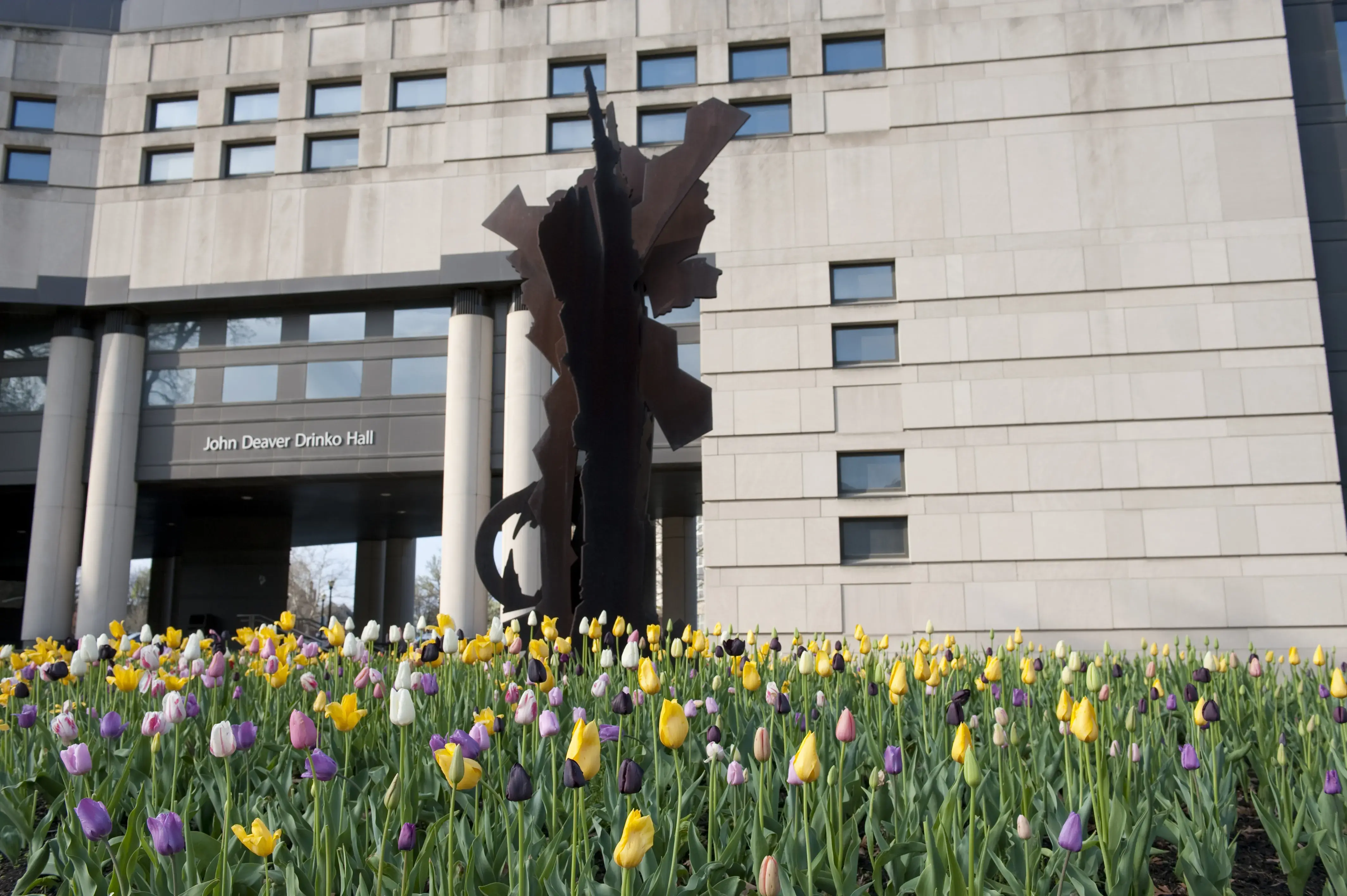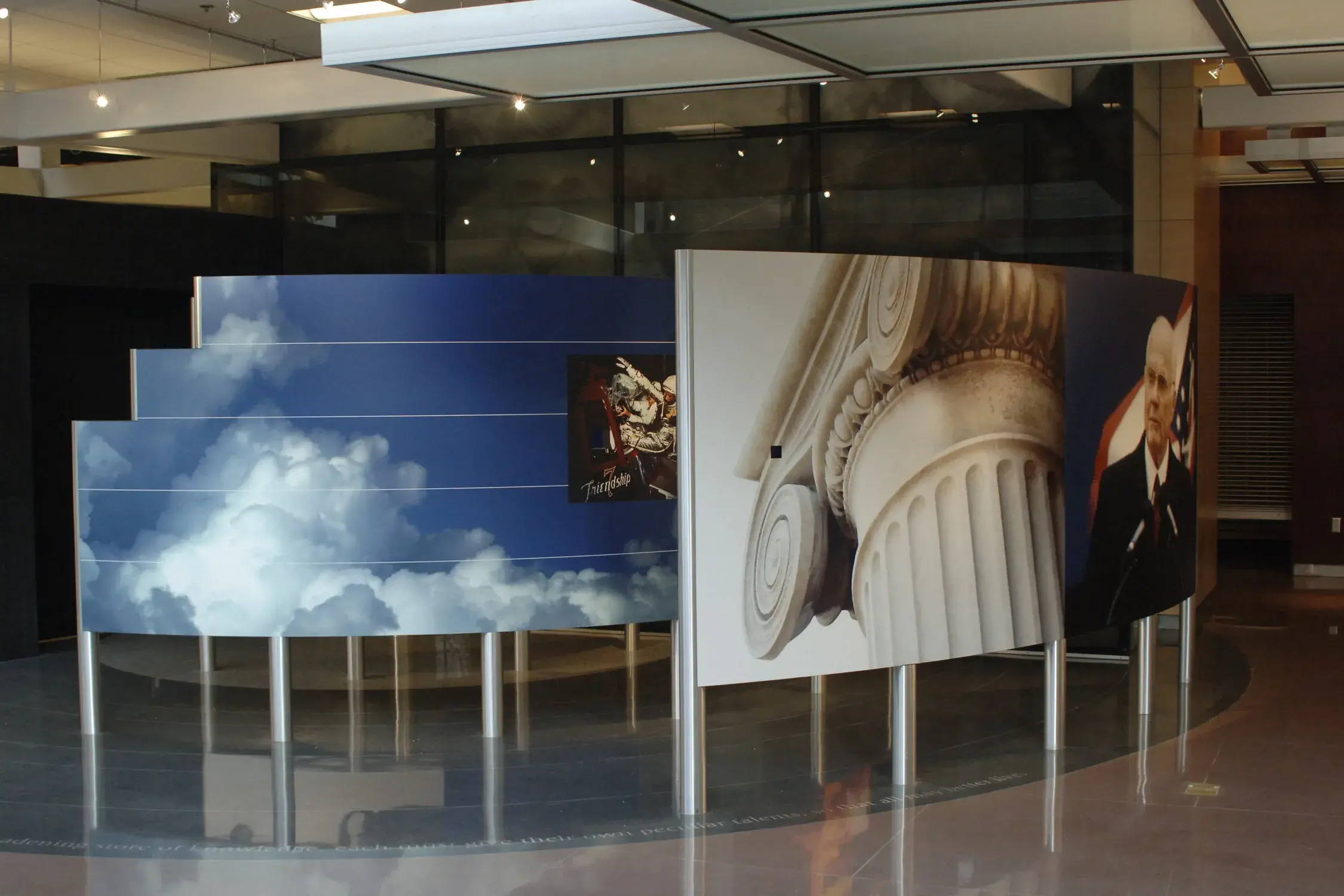
About the Art
Magdalena Abakanowicz’s Two Wings Flyer sits in a courtyard just north of the Psychology Building. This sizable sculpture is welded together from metal plates, its delicately curving lines and cylindrical center imbuing the sculpture with a sense of organic familiarity. Its general silhouette ratherresembles a bird in flight, as suggested by the title. The two triangular projections issuing from the sculpture’s body appear to be a stylized pair of wings, and a small protrusion on the front can be interpreted as a minimalistic beak. While the curved supporting pylons are less avian, they impart a sense of movement to the rigid sculpture, functioning like the “force lines” used to denote movement in comic book illustrations and Italian Futurist paintings.
The sculpture is serves as a prototype for all birds by presenting the absolute minimum characteristics necessary to communicate the essence of what a bird is. In this instance, many details are abandoned and what remains is a sculpted version of the schematic chevron-shaped “bird” that so often appears in the far background of landscape paintings. By ignoring those features that she deems unnecessary for the prototypical bird, Abakanowicz strives to represent what she calls “The Countless,” a group so vast that the individuals within it seem to fade away into the collective whole.
Collection of The Ohio State University. Funded through the Ohio Percent for Art program.
Material
Stainless Steel
Location
Outside of the Psychology Building
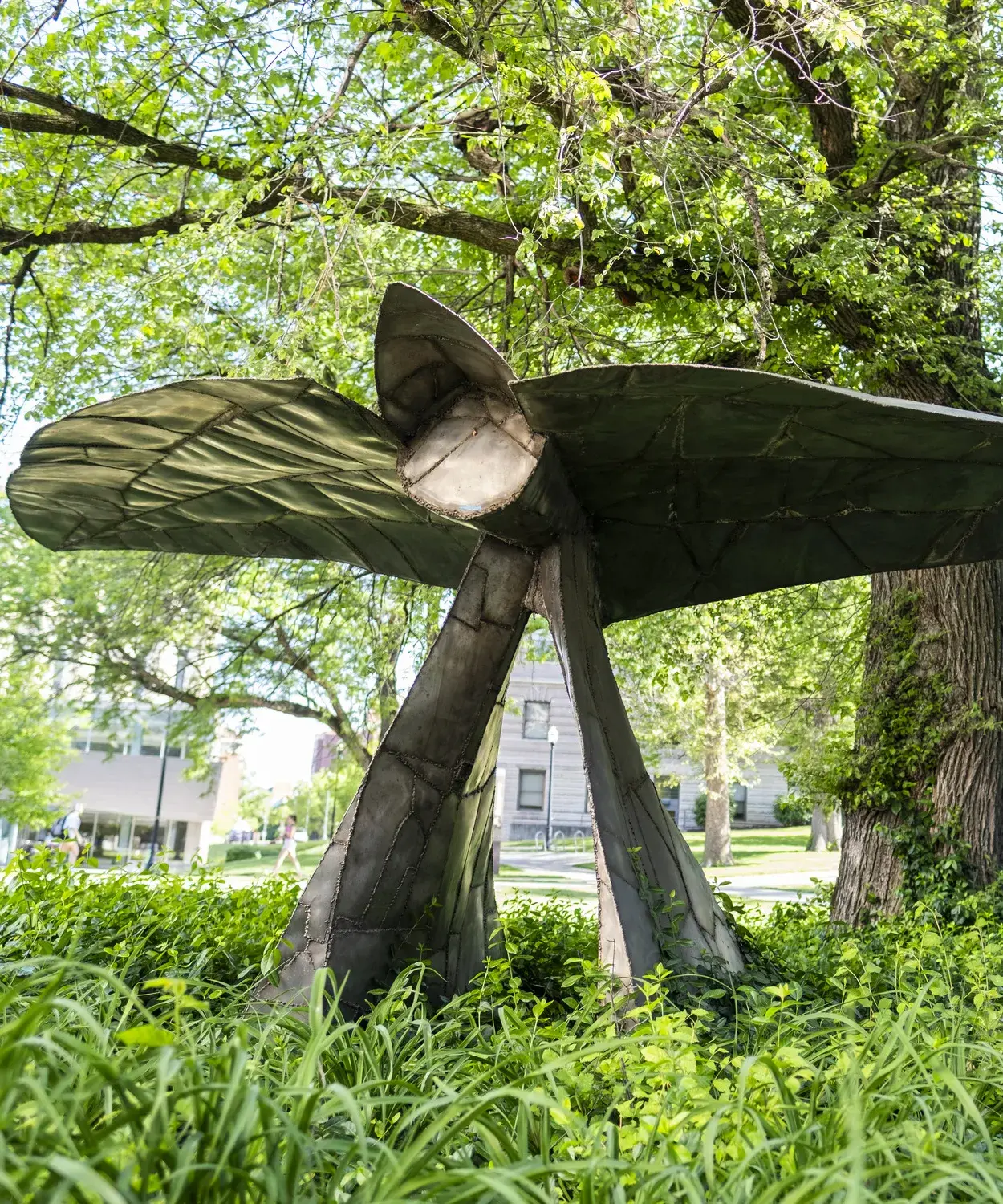
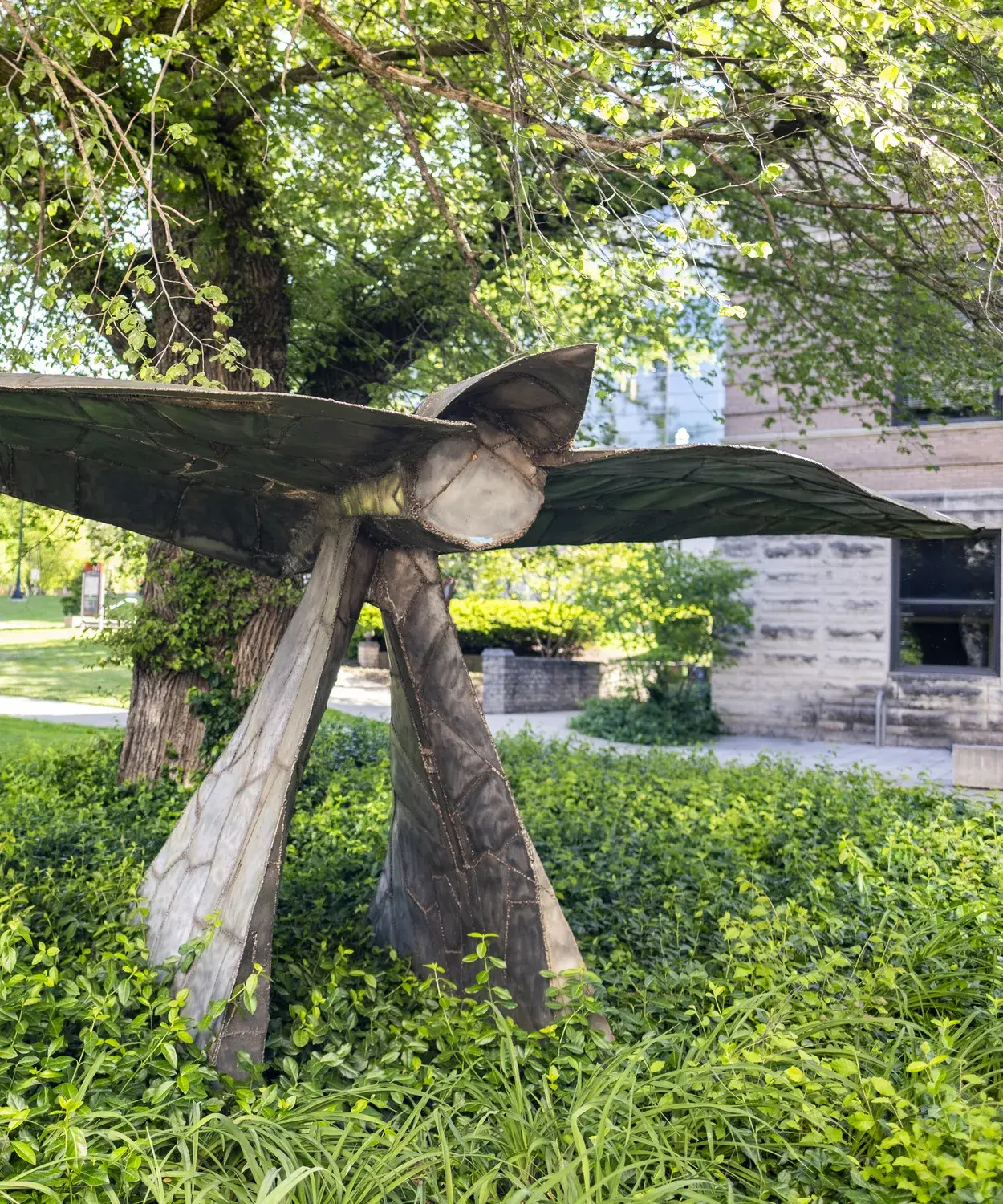
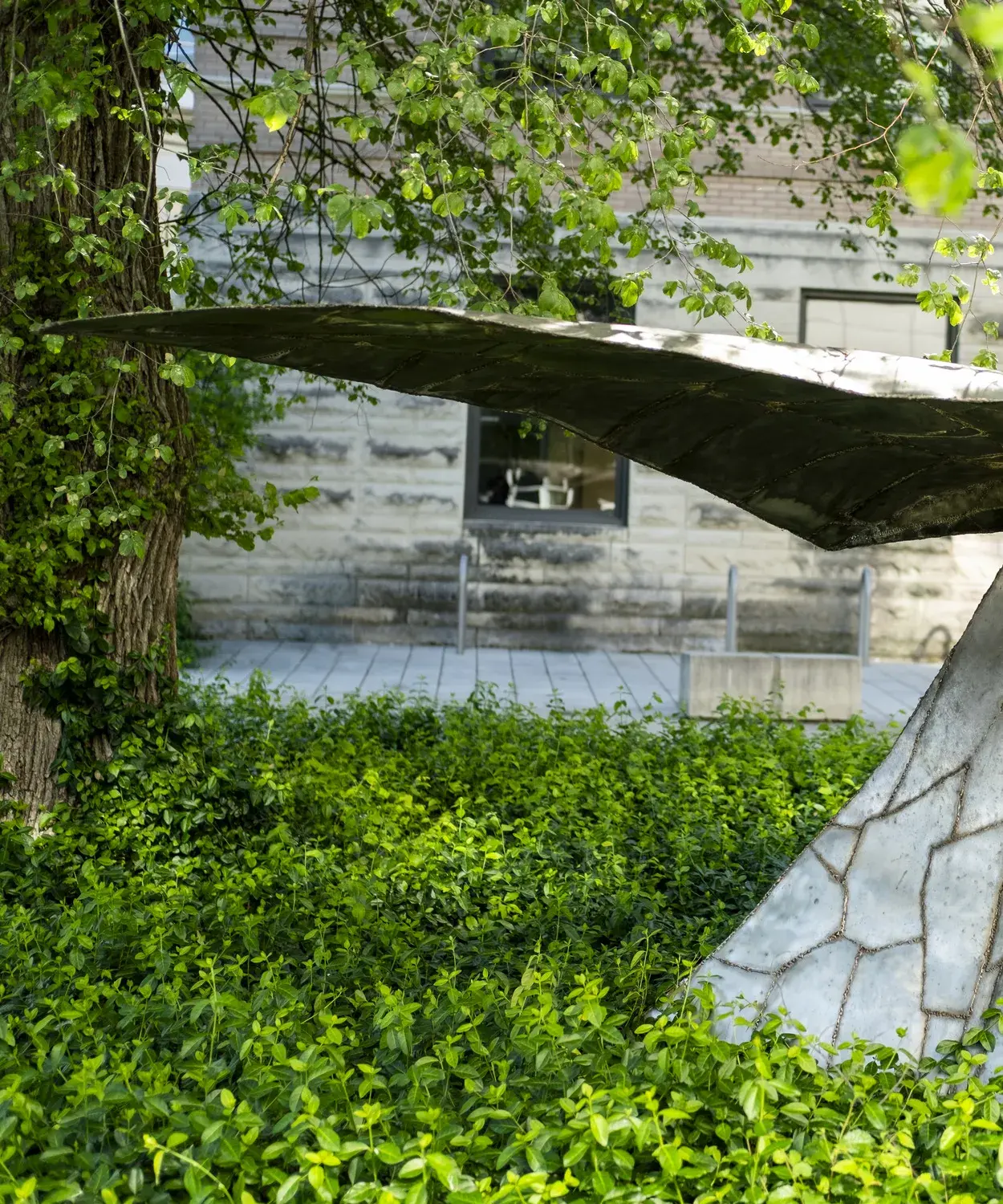

About the Artist
Magdalena Abakanowicz was an acclaimed and highly prolific Polish artist considered a pioneer in fiber-based sculpture. She was a student at the Academy of Fine Arts in Warsaw, Poland, between 1950-1954. Her work was greatly influenced by the political unrest in Poland during World War II and after. In her explorations of the figure, she examines the human ability to follow movements blindly. Bronze statues of individually formed headless bodies wrapped in burlap can be found in places such as New York Avenue and the Chicago Park District. Some of her earliest works, referred to as “Abakans,” were massive hanging textiles, which stood in stark contrast to the government-advocated socialist realism of the 1950s. These textiles won her international recognition, a remarkable achievement at a time when most Polish citizens were prohibited from traveling abroad. While her work reflects her own life, it remains broad enough to invite many different interpretations.
